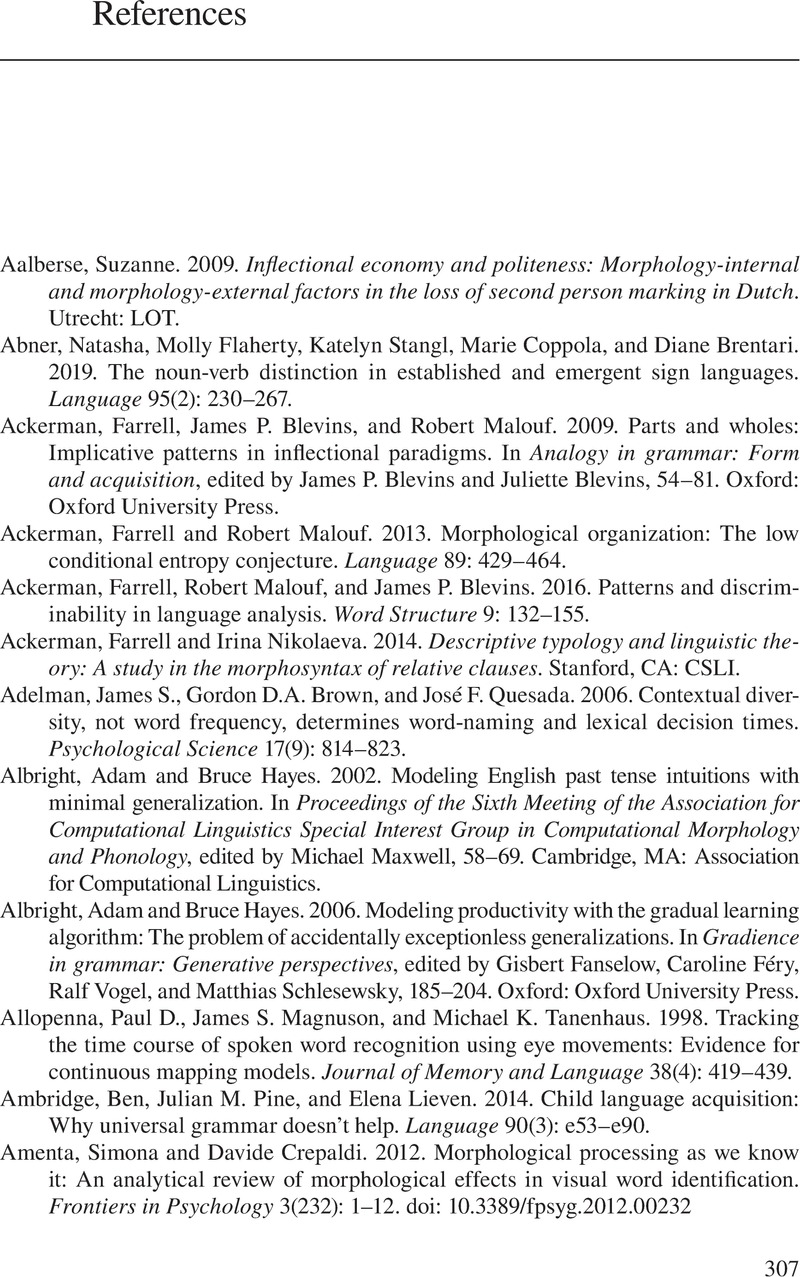Book contents
- Morphological Diversity and Linguistic Cognition
- Morphological Diversity and Linguistic Cognition
- Copyright page
- Contents
- Figures
- Tables
- Contributors
- Preface
- Abbreviations
- 1 At the Intersection of Cognitive Processes and Linguistic Diversity
- Part I In What Ways Is Language Processing Tuned to the Morphological Structure of a Language?
- Part II What Role Does Cue Informativity Play in Learning and How the Lexicon Evolves Over Time?
- Part III How Do System-Level Principles of Morphological Organization Emerge?
- References
- Language Index
- General Index
- References
References
Published online by Cambridge University Press: 19 May 2022
- Morphological Diversity and Linguistic Cognition
- Morphological Diversity and Linguistic Cognition
- Copyright page
- Contents
- Figures
- Tables
- Contributors
- Preface
- Abbreviations
- 1 At the Intersection of Cognitive Processes and Linguistic Diversity
- Part I In What Ways Is Language Processing Tuned to the Morphological Structure of a Language?
- Part II What Role Does Cue Informativity Play in Learning and How the Lexicon Evolves Over Time?
- Part III How Do System-Level Principles of Morphological Organization Emerge?
- References
- Language Index
- General Index
- References
Summary

Information
- Type
- Chapter
- Information
- Morphological Diversity and Linguistic Cognition , pp. 307 - 346Publisher: Cambridge University PressPrint publication year: 2022
